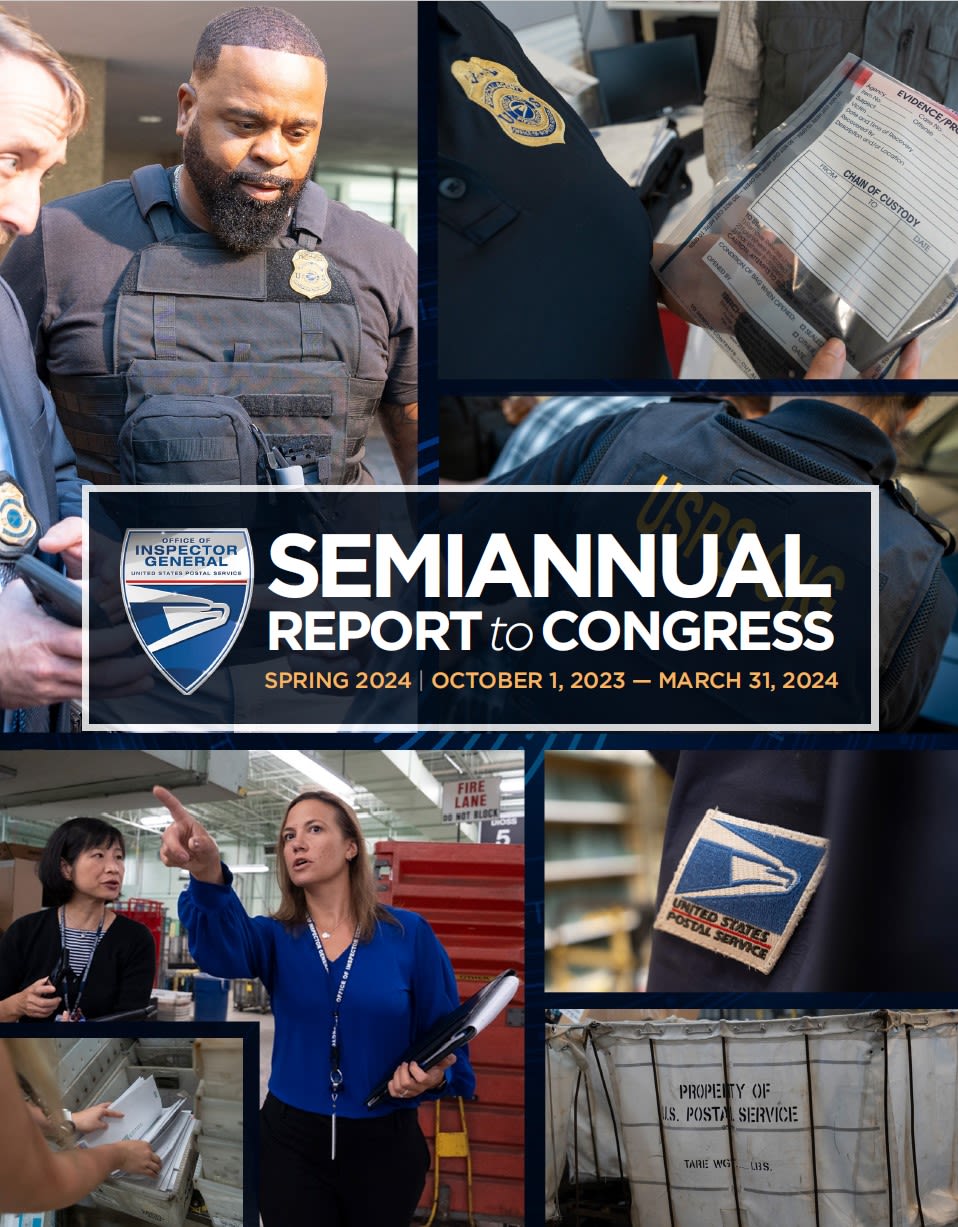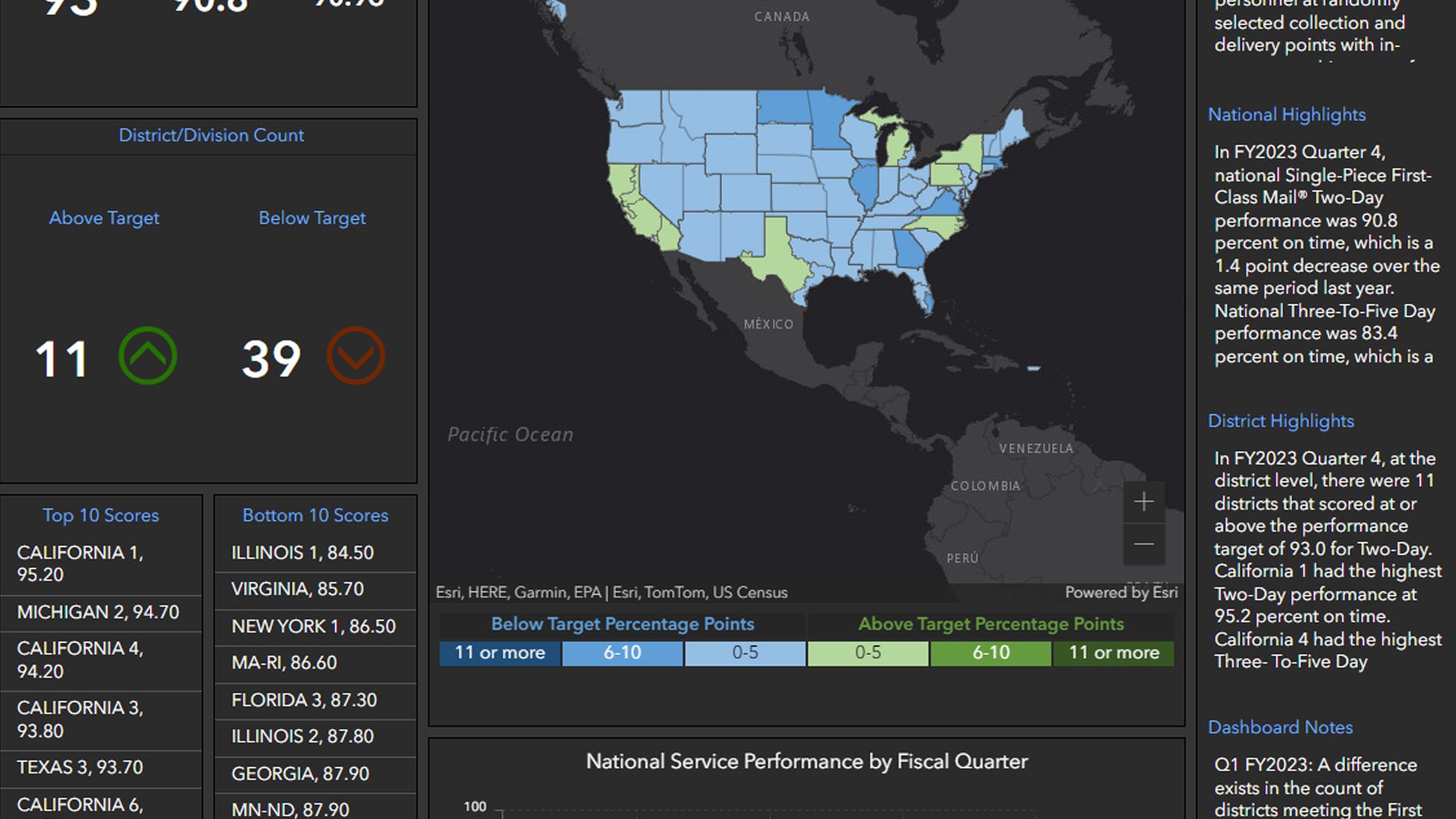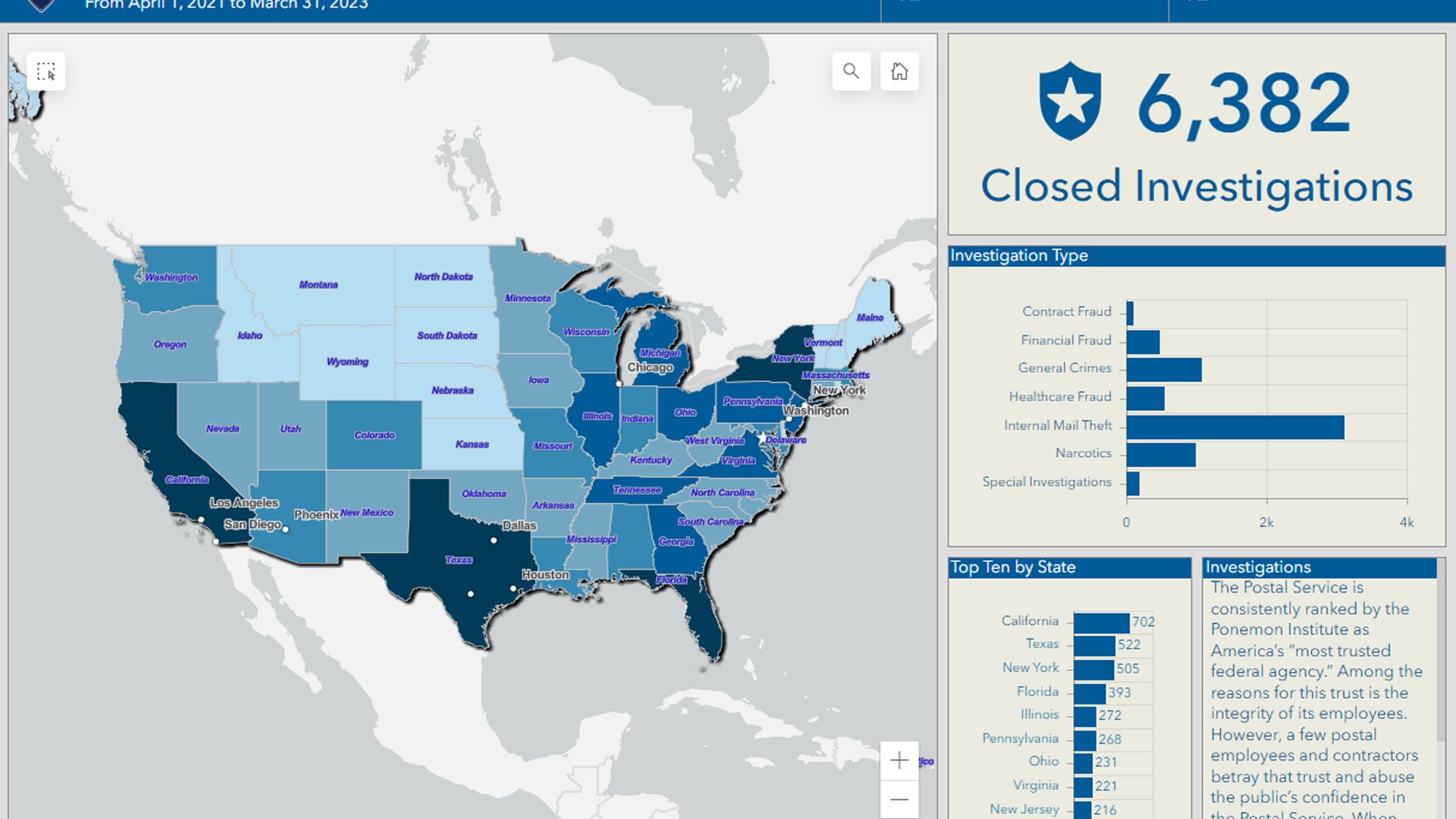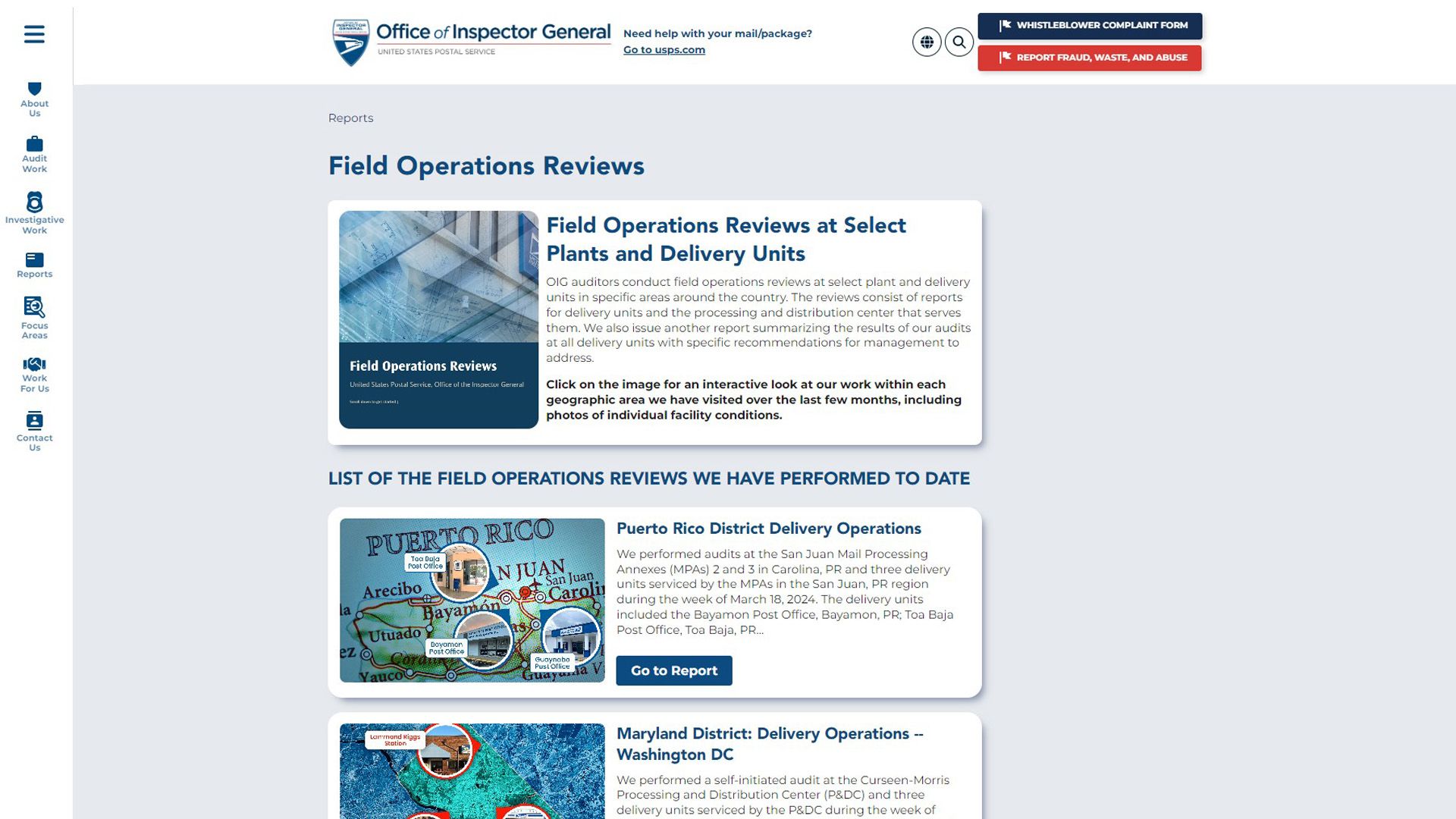United States Postal Service
Office of Inspector General
Semiannual Report to Congress
Spring 2024 | October 1, 2023 - March 31, 2024
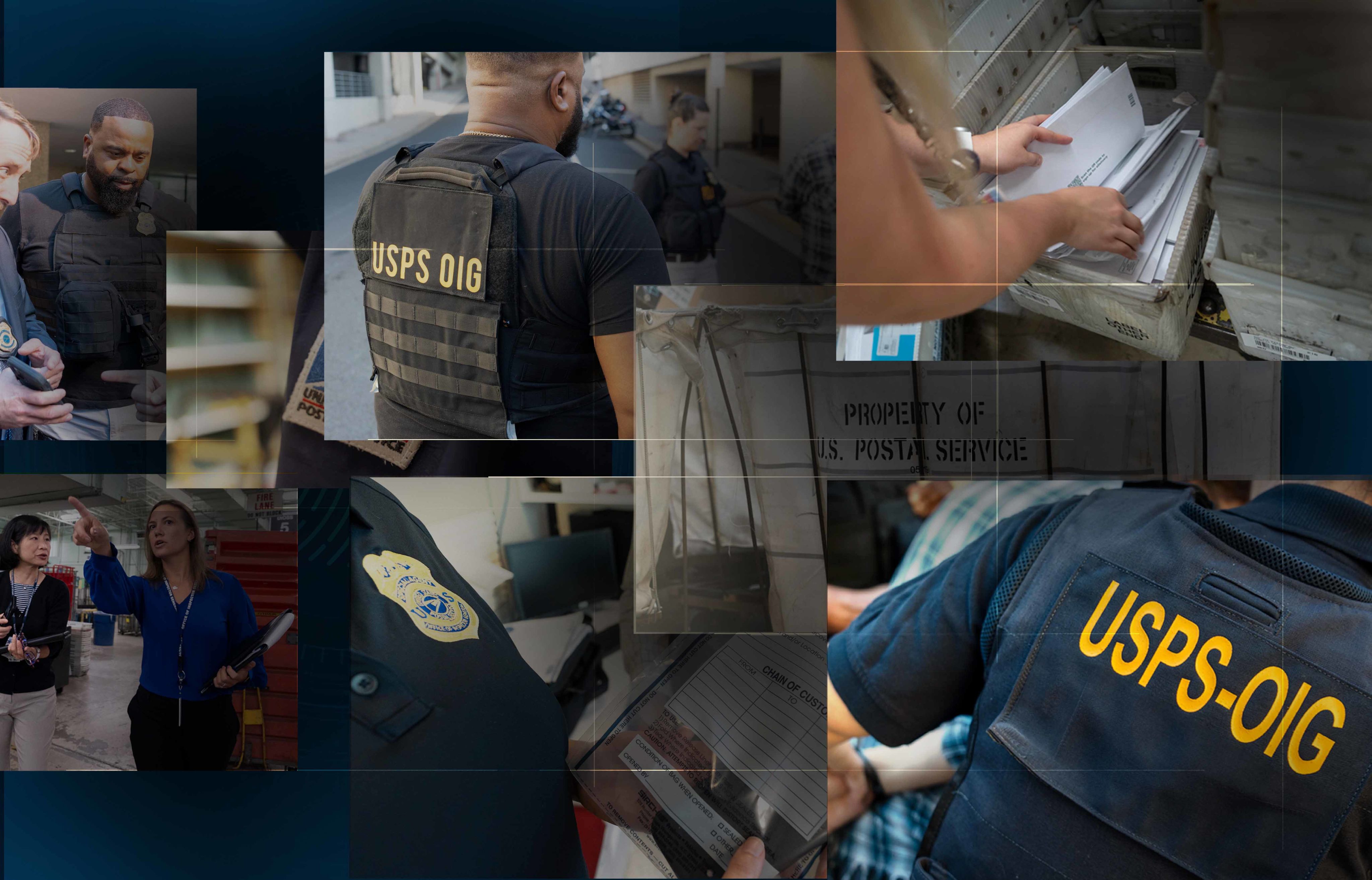
Our Work
As the U.S. Postal Service rapidly rolls out changes and other initiatives related to its 10-year Delivering for America (DFA) plan, you will see our work for the first six months of fiscal year (FY) 2024 has played a critical role in ensuring the efficiency, accountability, and integrity in the nation’s postal system.
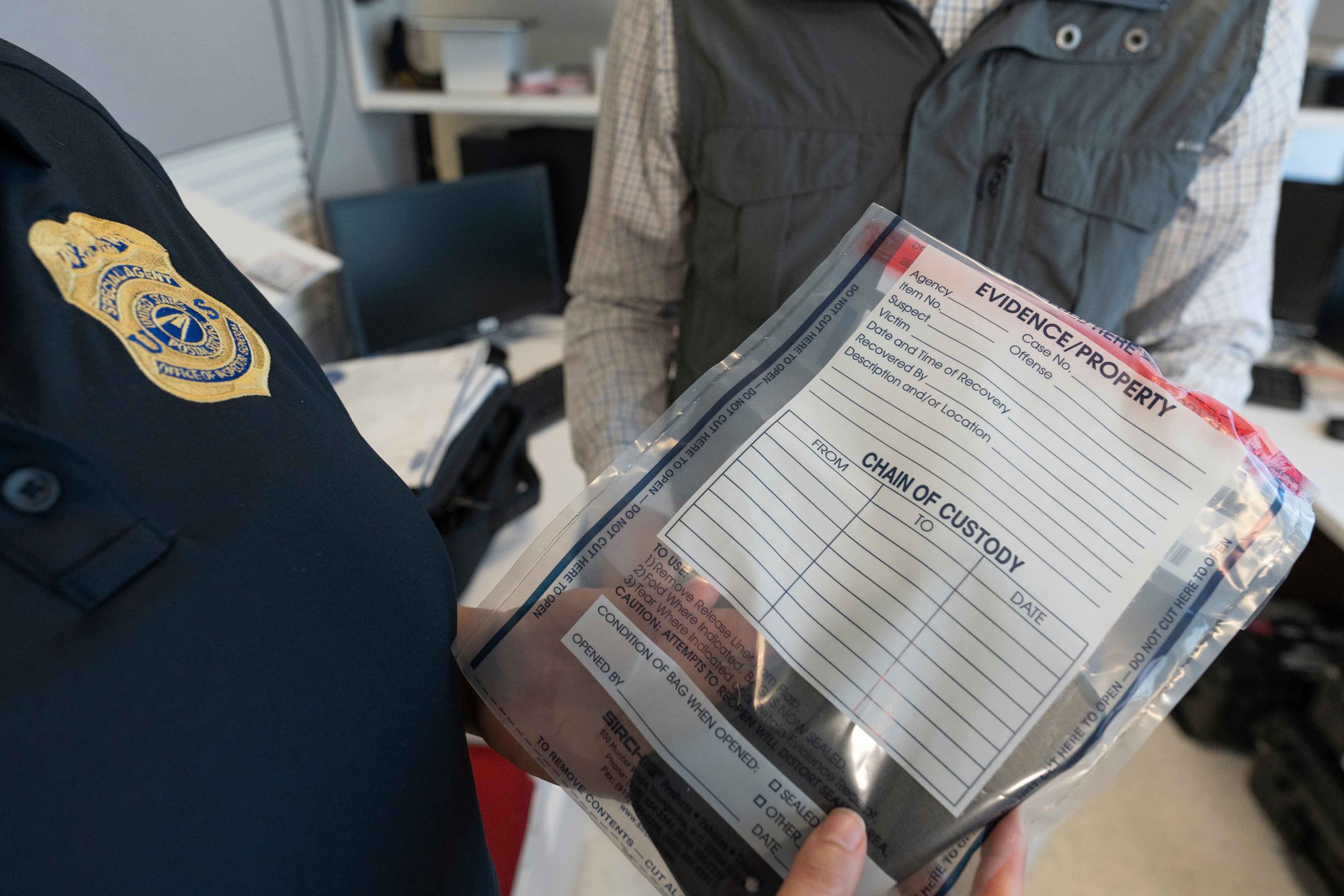
During FY 2023, our agency was made up of 988 personnel
to oversee a postal workforce of over 635,000 employees.
While the scope and breadth of our work is extensive, we also have the lowest ratio of employees relative to our parent agency compared to other OIGs: there is only one of us for every 648 postal employees.
Our agency prides itself on meeting the demands of the job, even while operating on a reduced budget. We provide a prudent return on investment to USPS, returning nearly $7 for every $1 invested in our FY 2023 budget alone. However, to protect the Postal Service and the nation’s longstanding trust, it is imperative our agency receive full funding of our budget request. This will enable us to continue playing a critical role in overseeing the Postal Service and the Postal Regulatory Commission, ensuring confidence in the integrity and safety of the mail.
Our investigations, audits, and white papers play an important role in maintaining the integrity of the Postal Service, its revenue and assets, and its employees. Our special agents, auditors, researchers, and support staff work hard to protect the sanctity of the U.S. Mail by deterring fraud, waste, and abuse by postal employees and contractors.
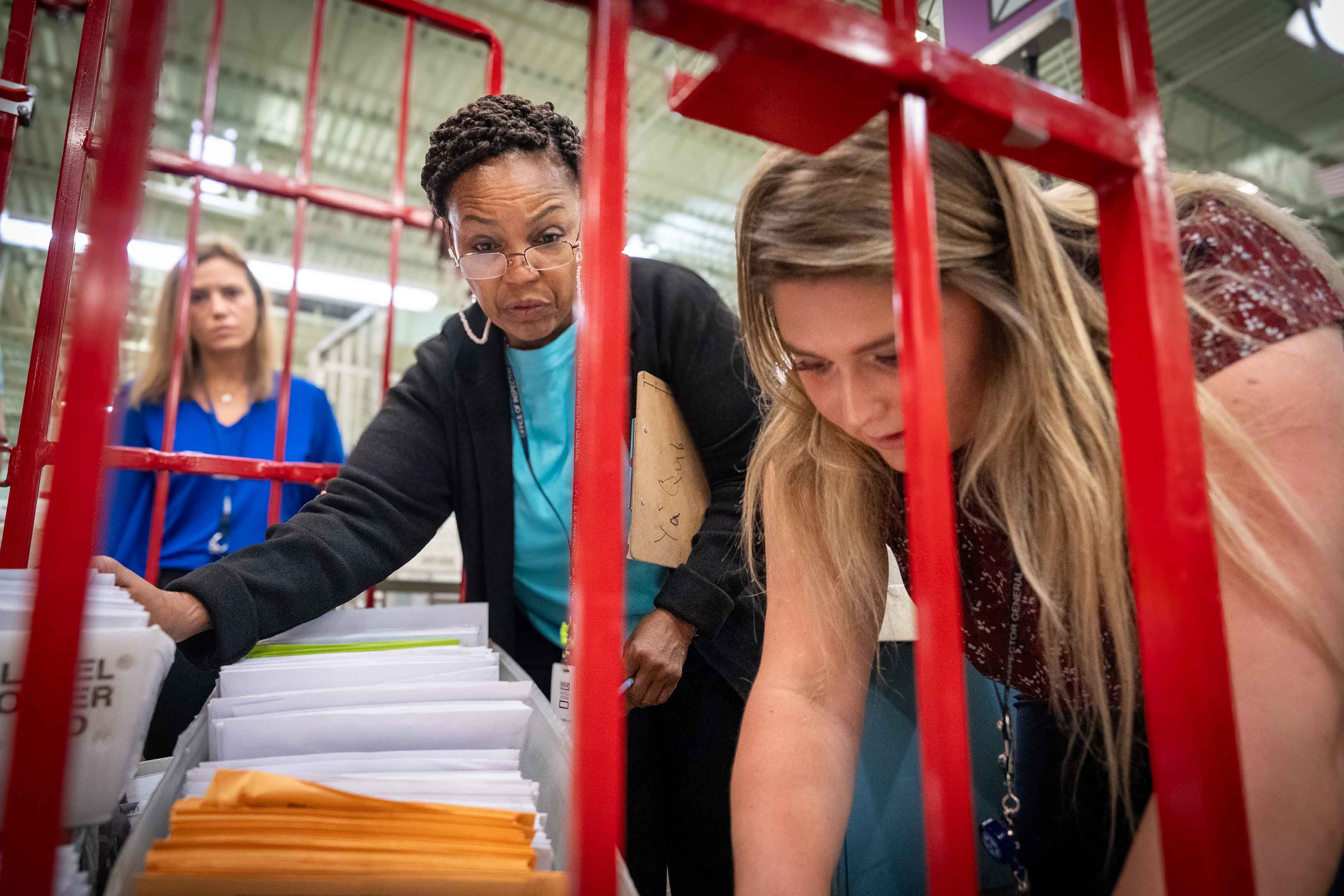
In the first half of this fiscal year, we completed:
- 1,520 investigations that led to
- 304 arrests and 340 indictments
Our special agents’ work resulted in more than:
- $14 million returned to USPS
- $187 million saved by avoiding fraudulent costs
- and over $28 million in fines, restitution, and recoveries
Our audits and research play an equally significant role:
During this period, we issued 59 reports, management advisories, white papers, and made 168 recommendations to postal management, of which 88% were accepted. This work found more than $69 million in unnecessary or non-compliant costs for USPS. It also found ways through which the agency can increase its revenue by more than $19 million.
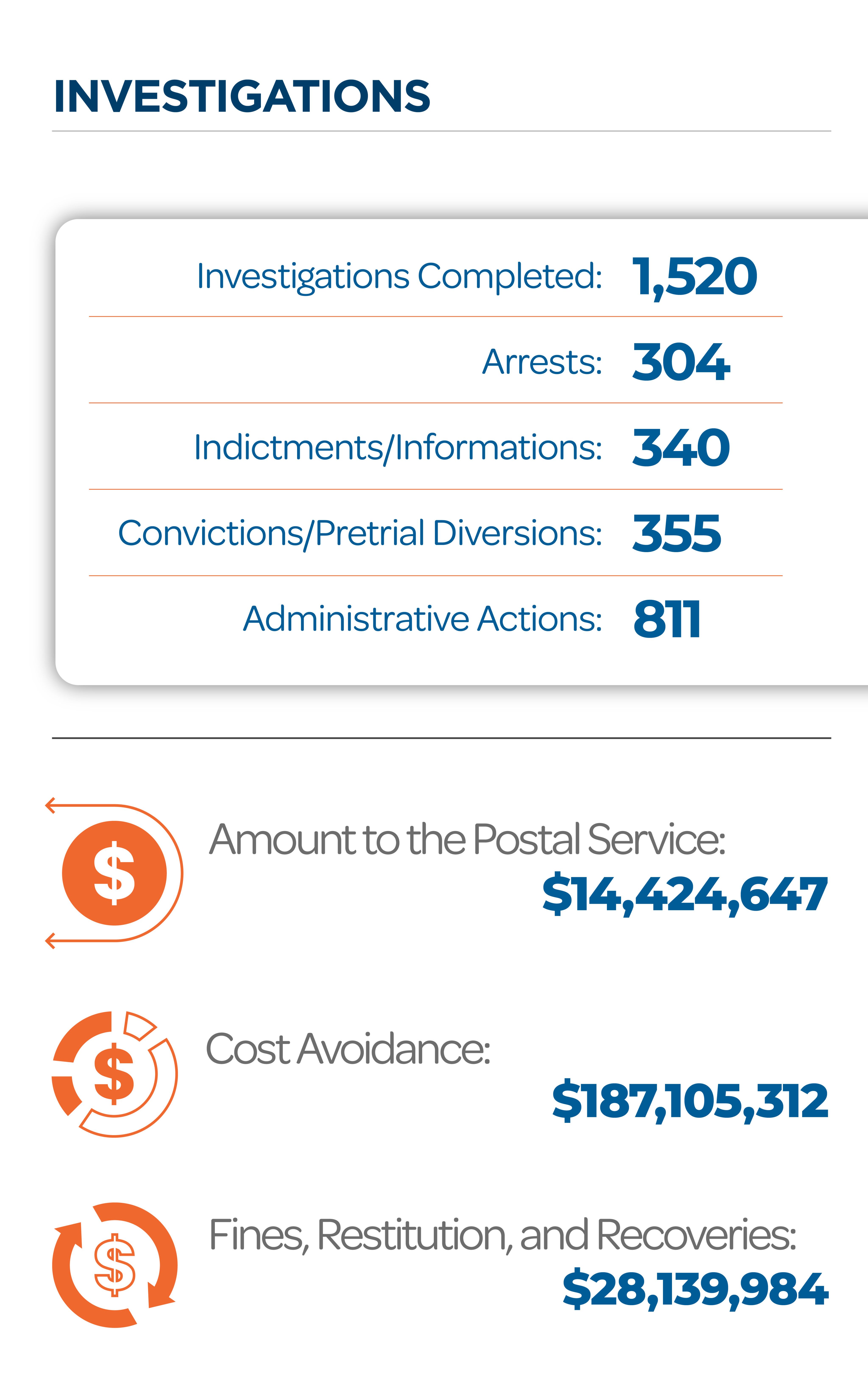
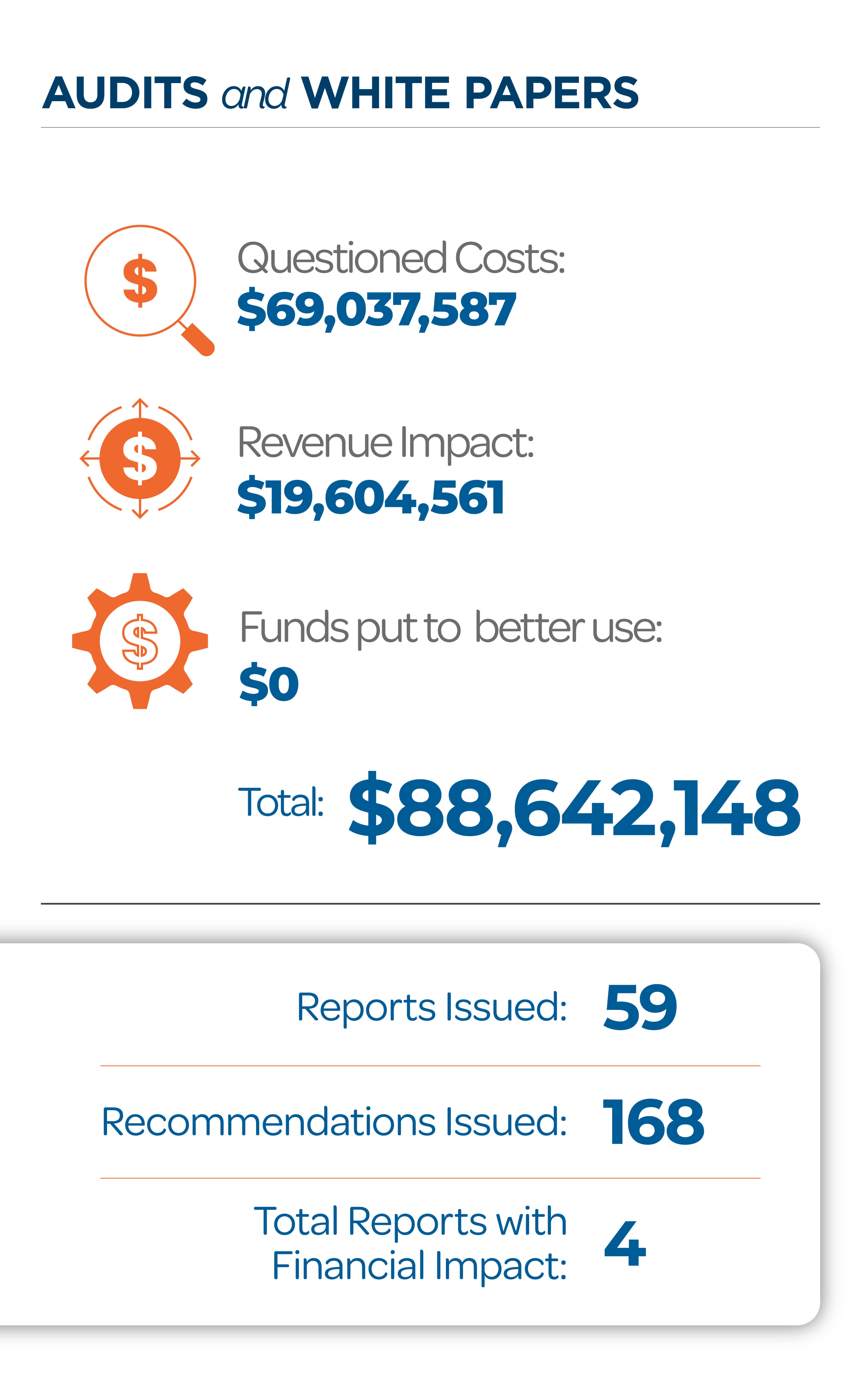
NARCOTICS






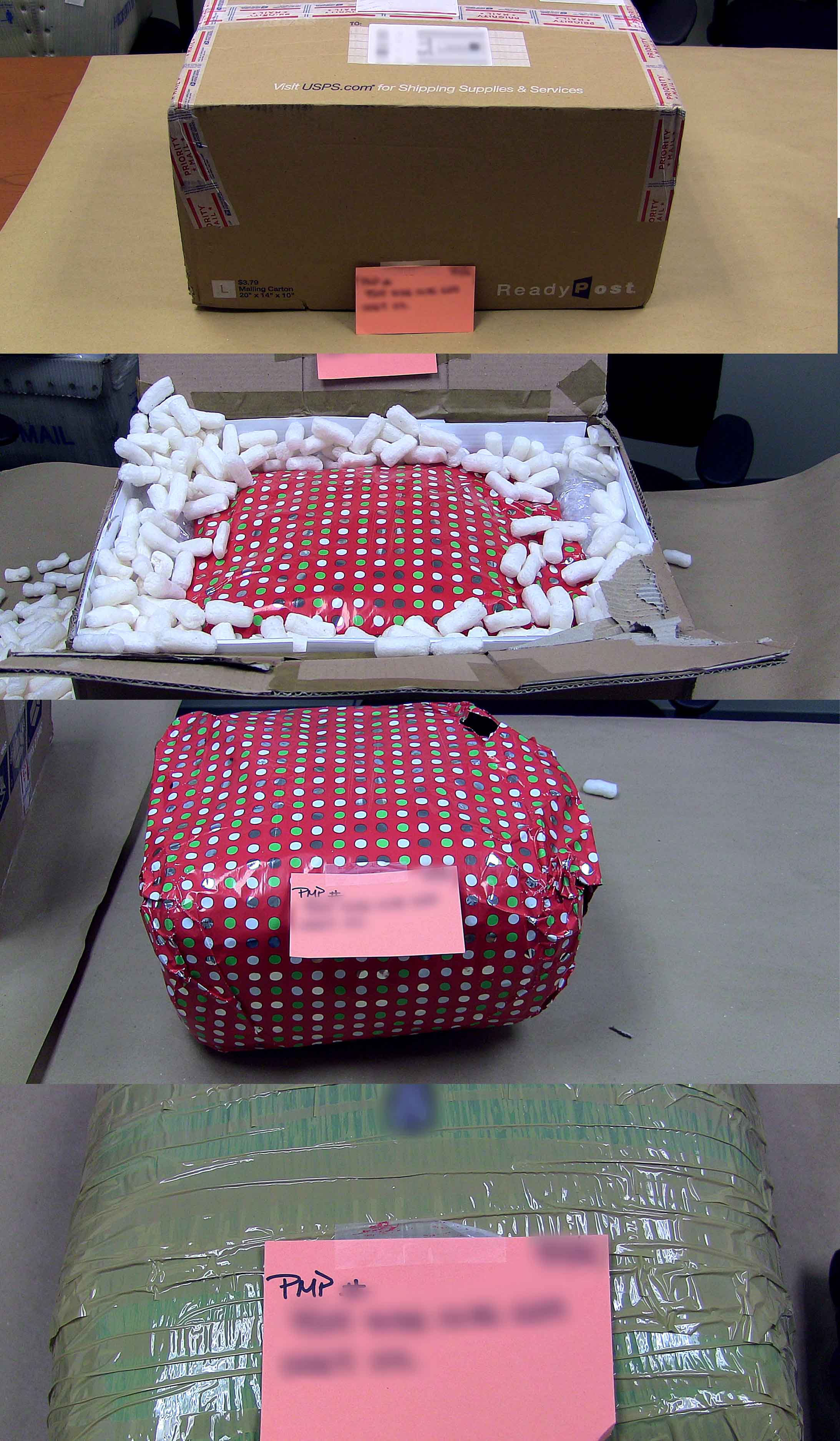
Wrapped package inside a box special agents seized due to suspected contraband. Source: USPS OIG.
Wrapped package inside a box special agents seized due to suspected contraband. Source: USPS OIG.
As the nation’s opioid crisis deepens, we remain steadfast in our mission to combat drug trafficking through the U.S. Mail, both domestically and internationally. Now more than ever, our work in this area is crucial in America’s fight against illicit substances.

We keep a heightened focus on simple possession-and-use cases and dismantling criminal organizations, which increasingly target postal employees due to their access to USPS’s extensive delivery network. To beat criminals at their game, our Office of Investigations leverages both a resolute investigative approach in the field and a vigorous data analytics program. We also partner with various other law enforcement agencies to augment our investigations’ scope and impact.

An example of our recent narcotics work involved two postal employees who conspired with members of a criminal organization — one of them an active police officer — to divert narcotics parcels from the mailstream. All co-conspirators were arrested, charged, and convicted, and the two employees were sentenced to a combined three and a half years’ probation. The other four suspects were sentenced to a combined more than nine years in prison and eight years’ probation.

Wrapped package inside a box special agents seized due to suspected contraband. Source: USPS OIG.
The OIG remains committed to identifying and removing bad actors such as these and ensuring the safety of postal employees. We take any allegation of employees conspiring with DTOs seriously and will exhaust all resources to fully investigate any such claim.
To learn more about how OIG investigations are making a difference to the American public, read our Investigative Case Highlights
MAIL THEFT

As incidences of mail theft grow around the country, we do our part to root out any postal employee involvement. We continue to focus on postal employees who steal from the mail, with a growing emphasis on external criminal organizations that target, recruit, and collude with them to steal valuables and items like checks and credit cards.
In addition to our robust data analytics, we also work with key financial industry partners to gain better insights into check and credit card theft. In one investigation, our special agents identified a postal employee who worked alone to steal and cash nearly 420 checks in just six months. The employee was arrested, charged, and sentenced to 20 years in prison to be followed by 10 years’ probation and was ordered to pay more than $58,000 in restitution.

Images of multiple stolen checks found on a suspect's phone
Images of multiple stolen checks found on a suspect's phone
Our dedicated Mail Theft program often overlaps with our audit work, where we evaluate the accountability and security of Registered Mail and arrow keys — USPS’s proprietary keys that open and secure blue collection boxes and cluster box units, such as those found in apartment buildings. Both Registered Mail and arrow keys are in high demand among criminals and postal employees who look to abuse their trusted positions.
Another critical area is the theft or willful delay or destruction of election and political mail. This is especially true as the growth of vote-by-mail options have increased USPS’s role in our nation’s elections. Our semiannual report has more about our efforts to deter the delay or destruction of election and political mail affecting the primary elections and the 2024 general election.
DELIVERING FOR AMERICA

The Postal Service has been rolling out a lot of network and operational changes as part of its 10-year Delivering for America (DFA) plan. One of the most significant DFA initiatives was the July 2023 rollout of the first regional processing and distribution center (RPDC) in Richmond, VA, which consolidates operations from nearby postal facilities. Our auditors assessed the operational impacts related to the launch, finding that while USPS had successes during implementation, it also faced its share of challenges.
The challenges led to added labor and transportation costs totaling over $8 million in questioned costs — namely, costs the OIG believes are unnecessary or unreasonable — over the first four months of operations. The challenges also contributed to a decrease in service performance for the Richmond region that continued four months after the launch. Our work on this topic has continued to garner significant congressional and stakeholder interest and media attention.
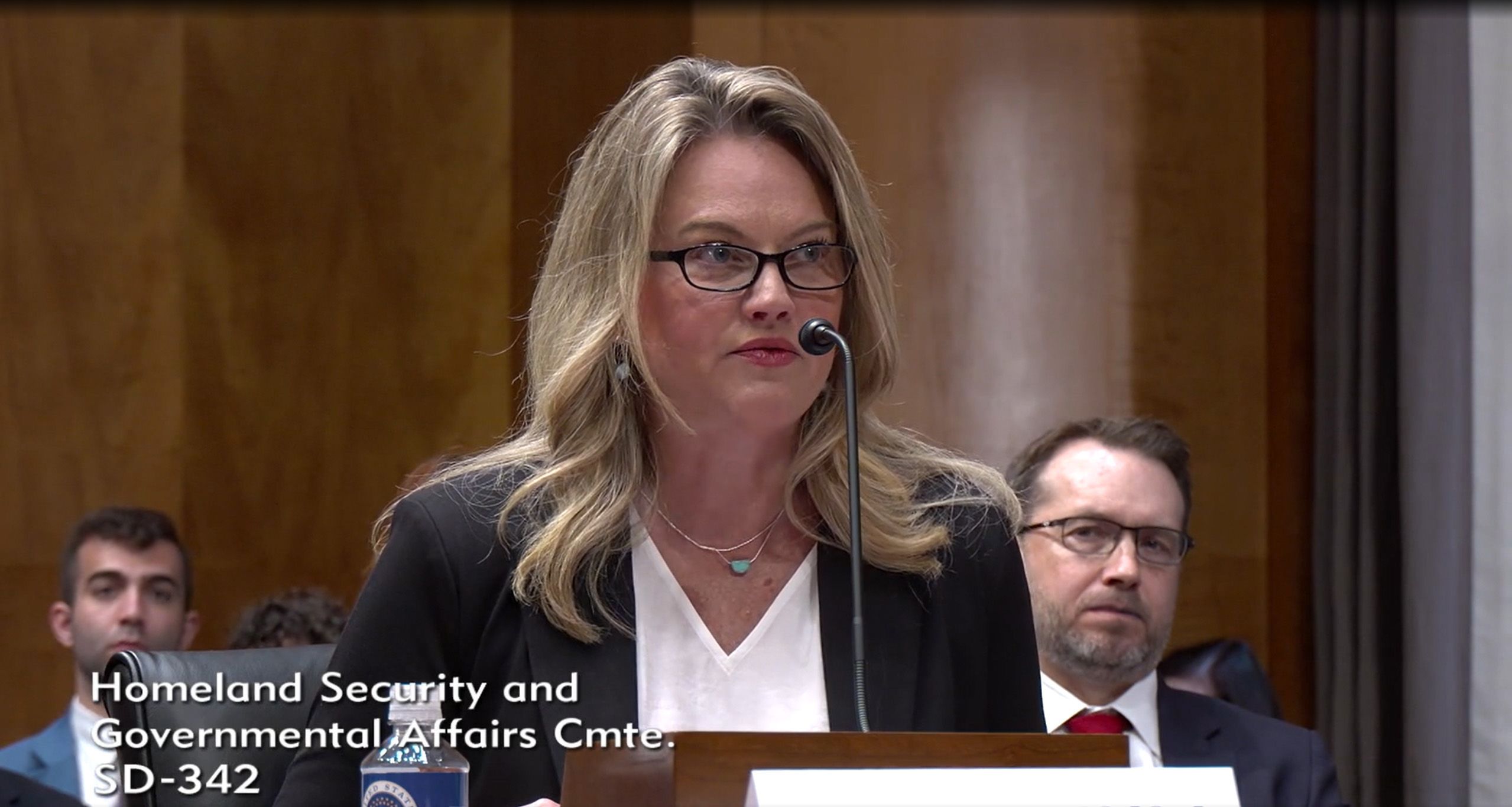
Watch USPS Inspector General Tammy Hull’s April 16, 2024, testimony before the Senate Homeland Security & Governmental Affairs Committee, where she discussed the OIG’s recent work related to the Delivering for America plan, its execution, and the impacts of the changes in mail processing and transportation
We likewise continued our work on the DFA’s financial and environmental sustainability strategies, which include a $9.6 billion investment to electrify postal delivery vehicles and procure electric charging stations. We also looked at ways to optimize postal cost and pricing strategies. One audit found opportunities for USPS to reduce costs by better planning its air capacity when transporting mail.
Similarly, a white paper compared the price of First-Class Mail postage in the U.S. to equivalent postage in 30 other countries. You’ve probably noticed the recent price increases for First-Class stamps, but our researchers found the 2023 price of a standard domestic letter in the U.S. was nearly half the average letter price in our sample of 31 countries. You can catch the paper’s insights in this visually appealing digital story.

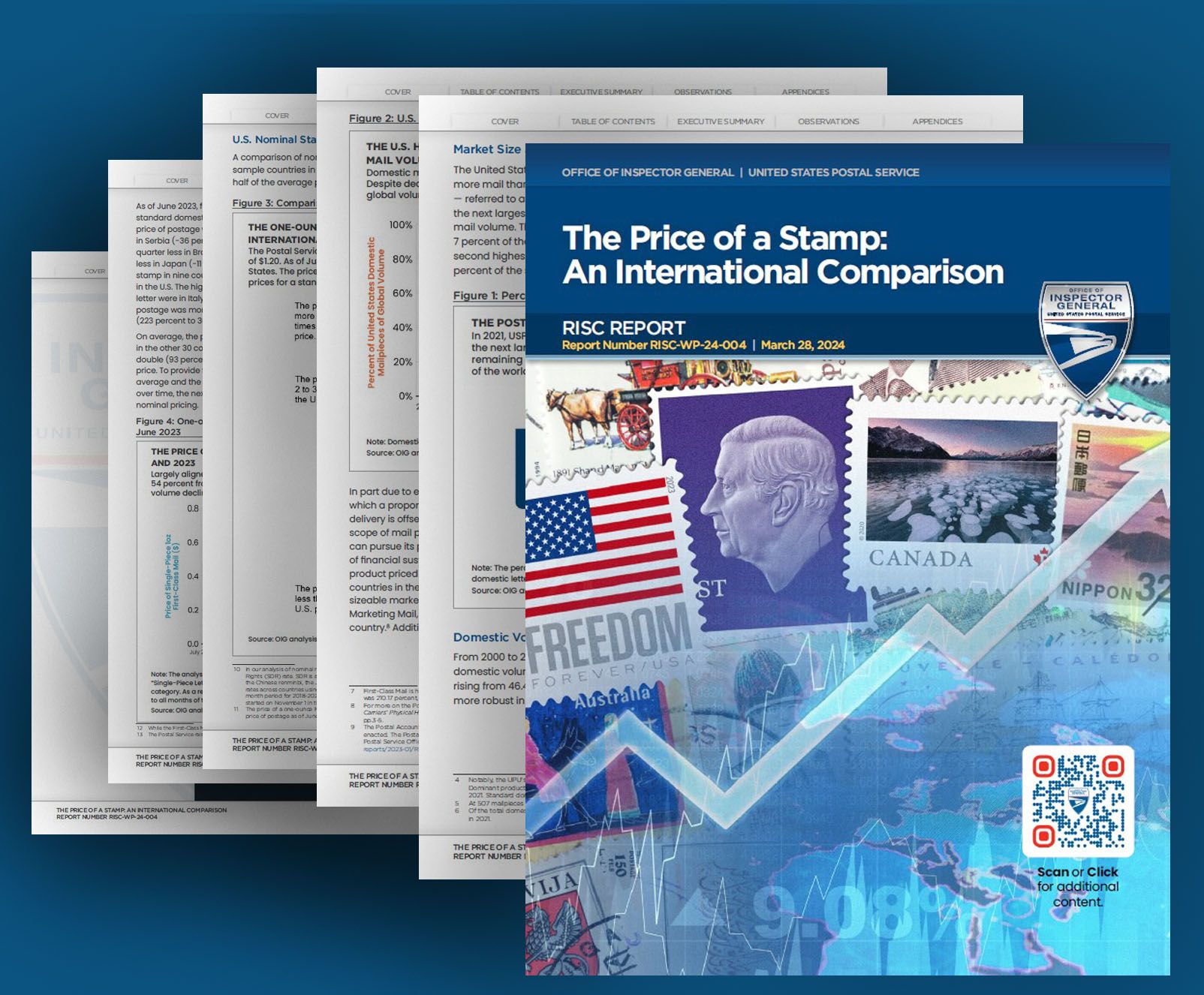
SERVICE PERFORMANCE

With an operation that delivers mail to every address in the country six days a week, the Postal Service is bound to experience service performance issues. Responding to congressional requests or indicators of poor service performance, our Field Operations Review auditors conduct fieldwork on regional delivery, transportation, and mail processing conditions and operations. This oversight makes up more than half of our audit work.
In this reporting period, we visited 19 delivery units and six processing and distribution plants. The plants and 18 of 19 delivery units had issues relating to delayed mail, to which staffing issues often contribute. Certain areas proved more problematic than others in terms of delayed mail. For instance, we found almost 60,750 delayed mailpieces in four delivery units across Chicago, IL, and almost 131,000 pieces of delayed mail when we visited six delivery units in the St. Paul, MN, and Bismarck, ND, areas.
A separate audit looked at the impact delayed mail has on qualified business mailers who use Business Reply Mail (BRM) to help their customers engage with them without paying for postage, given mailers cover that cost. While mailers and their customers value BRM service, processing delays, data reliability concerns, and incomplete closeout procedures hinder operational effectiveness and customer satisfaction. Our auditors found the broader operational effectiveness problems resulted from insufficient management and oversight, so we made recommendations to improve that.
While our service performance work focuses on finding deficiencies in the Postal Service to which we propose solutions, we also recognize the agency’s successes. In our peak season preparedness audit, we found USPS is taking measures to meet the demands of the upcoming period between Thanksgiving and New Year’s Day, when mail volume ramps up. Given the comprehensive scope of USPS’s peak season preparedness plans, we made no recommendations, and postal management generally agreed with our findings.
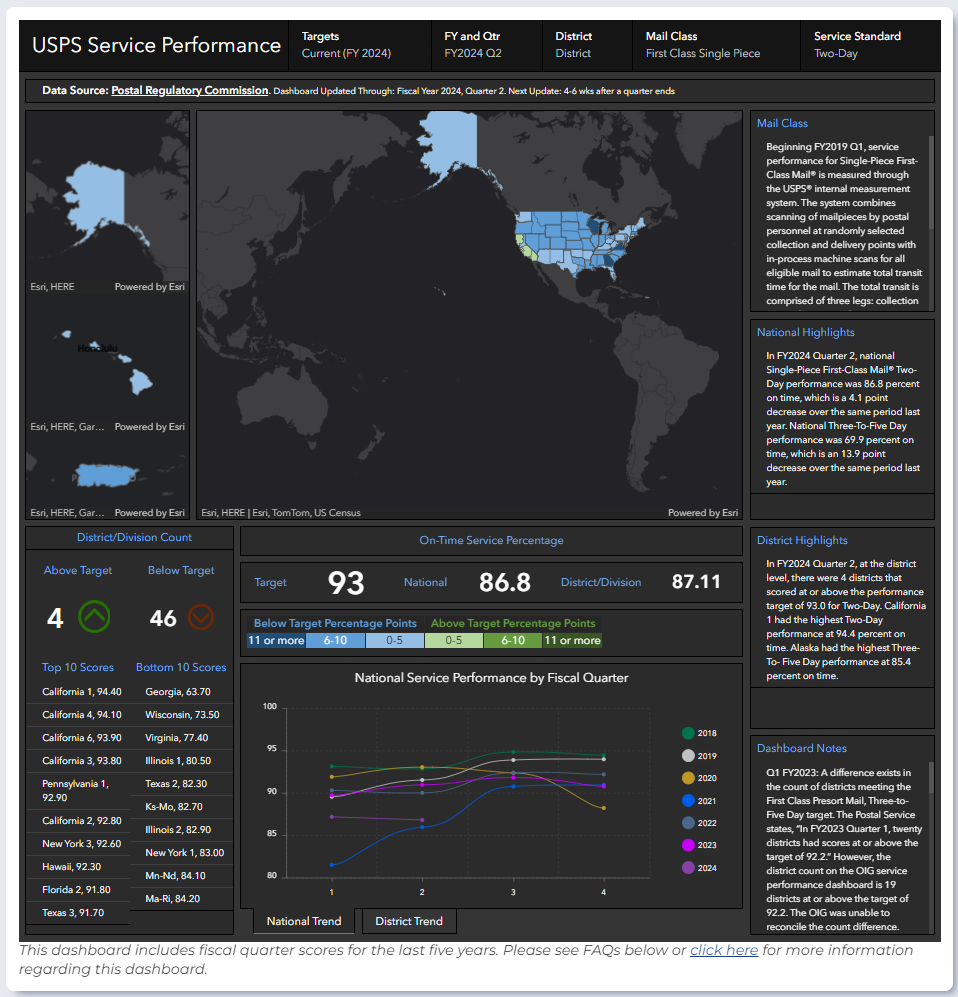
Curious how service performance is doing in your area? Check out our USPS Service Performance dashboard
LABOR ISSUES



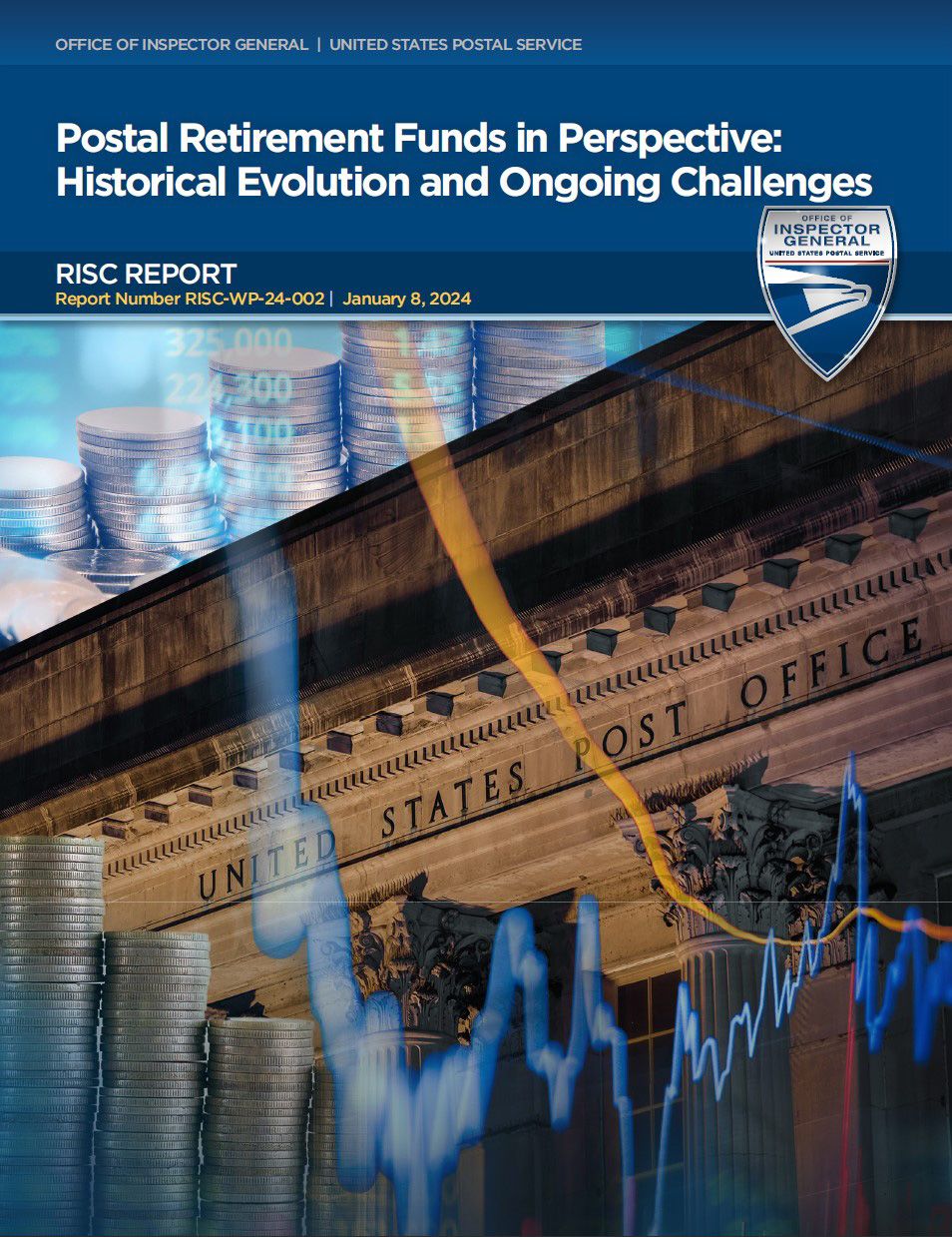
With a workforce that’s more than 635,000 strong and unique legislative challenges, the Postal Service faces its own share of labor issues. Our work in this area included improving employee safety, ways to invest postal retirement funds, and ways to ensure employees are paid on time.
One audit examined USPS’s emergency preparedness for Winter Storm Elliott, which arrived in Western New York in December 2022. Within a matter of minutes, winds went from 10 to 70 miles per hour and brought about 36 inches of snow over four days. Responding to a congressional inquiry, our auditors reviewed the Postal Service’s actions before, during, and after the storm.
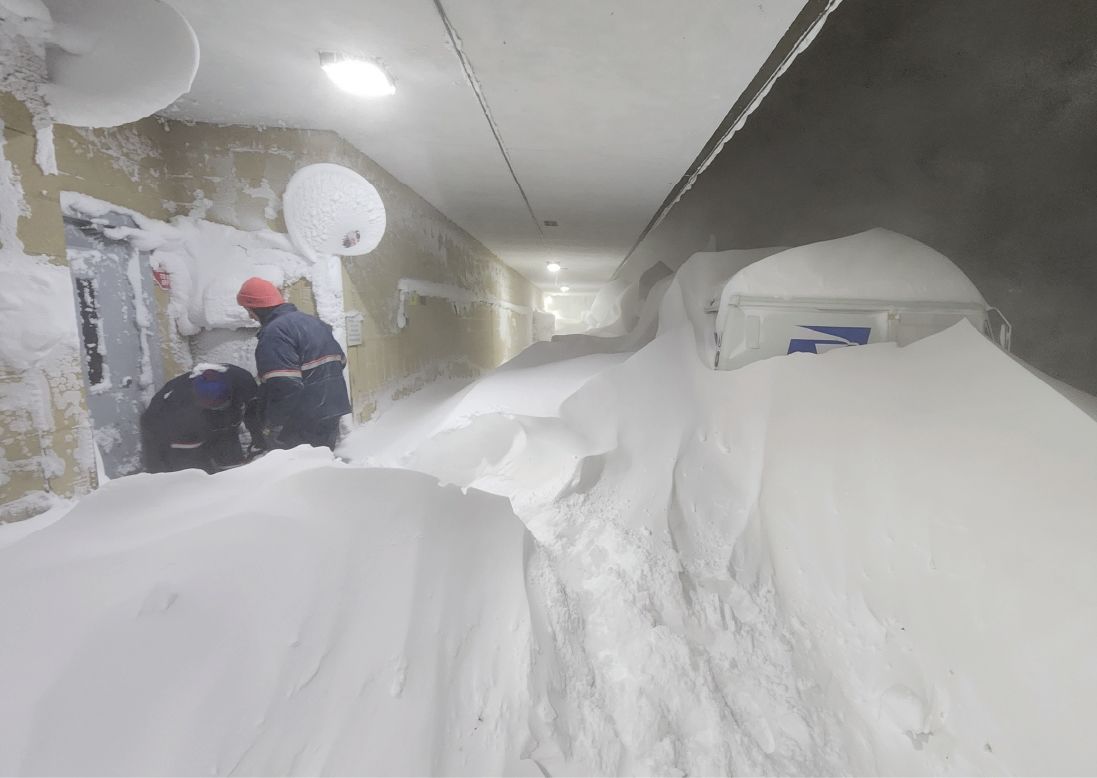
Snow accumulation at the Williamsville delivery unit
Snow accumulation at the Williamsville delivery unit
We found district management didn’t ensure the manager at one delivery unit was fully prepared to safeguard employees before the storm arrived. We also found employees at two facilities were placed at risk when district management didn’t take immediate action when conditions became life threatening. Those at risk included a carrier who was eight months pregnant who became immobilized on the road while trying to drive home in the hazardous conditions.

Employees sheltering at the Williamsville delivery unit
Employees sheltering at the Williamsville delivery unit
We also continued our work to find ways to improve the way the Postal Service invests its retirement funds. Our latest white paper on this topic found a decades-long legislative history gave USPS more retirement liability compared to other federal agencies. The Postal Service Retiree Health Benefits Fund is expected to be depleted in FY 2031 and retirement costs are expected to go up to nearly $18 billion in FY 2032. This may not only affect current and former postal employees: the increase could divert money away from USPS’s capital investments in its network or lead to increased prices for postal customers.
Dive into Our Semiannual Report
Having covered these five focus areas in brief, we invite you to read our 2024 Spring Semiannual Report to Congress. You’ll find a more detailed, yet still high-level analysis of each of these areas, their impact on the Postal Service, and how our work can help USPS navigate the changes and challenges ahead.

